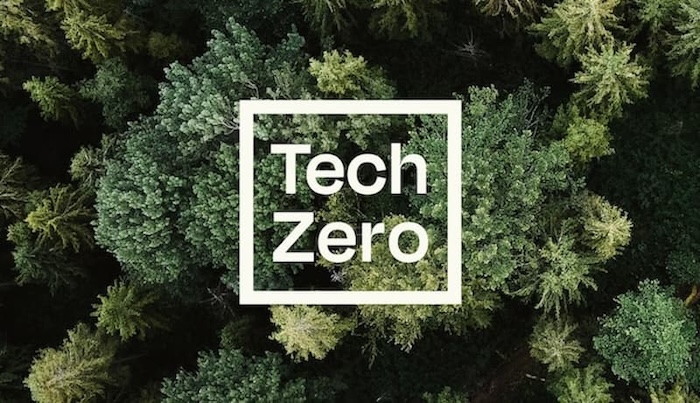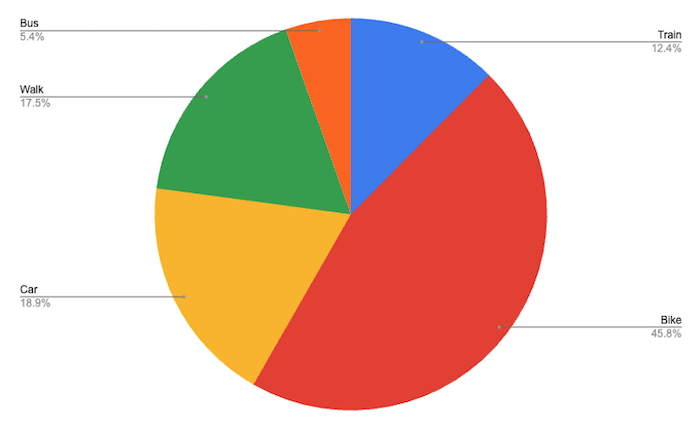Back in 2021, we made some big climate commitments. Key among them was to be ‘net zero’ by 2030.
We think it’s important to be accountable for our commitments, and transparent about the progress we make. Like many organizations on the road to net zero, we’ve encountered some bumps.
In this update, we’ll share our progress in 2023 and discuss some of the challenges and delays we faced when compiling this year’s update.
Why are we going net zero?
Unfortunately, 2023 was another record-breaking year for climate change.
1 million square miles of Antarctic sea ice melted. Wildfires caused havoc. The critical 1.5⁰c threshold (the upper limit for the world’s average surface temperature increase by 2100) was surpassed on at least 38 days.
Individuals and organizations need to do what we can. Which is why we made the following pledges:
- To ensure our total gross emissions never exceed 2019/20 levels, even as we grow
- To halve our gross carbon emissions by 2025/26, compared to 2019/20
- To keep our per-employee carbon emissions below 2019/20 levels
- To remain carbon neutral for every year from 01 June 2019, aiming for Net Zero by 2030
We’re signatories to the Tech Zero pledge, committing to annually measure and publish our scope 1, 2 and 3 greenhouse gas emissions and short-term targets to help us reach our goals.

You can download our 2023 Tech Zero submission here.
Some terminology
A reminder of some terminology:
Carbon neutral means we counter the emissions we create through verified carbon capture mechanisms, like tree planting. We’ve been carbon neutral since June 2019, and work with GoldStandard to manage our offset.
Net zero is a step further. It involves reducing our footprint so we rely as little as possible on offsetting. We aim to be net zero by 2030.
So, how did we do in 2023?
Pledge 1: We will ensure our total gross emissions never exceed 2019/20 levels, even as we grow
We perform detailed annual audits to calculate how much greenhouse gas emissions we generate. We cover everything from the energy consumed by our website servers to the power our team requires to heat their work-from-home locations.

In 2022/23, we were responsible for an estimated 234.3 tonnes of CO₂ equivalent (tCO₂e). That’s an 8% drop on our 2019/20 benchmark but 21% up on 2021/22. As our team grows, emissions will inevitably grow with them. But it’s reassuring that we’ve kept below our 2019/20 number.
Pledge 2: We will halve our gross carbon emissions by 2025/26, compared to 2019/20
This pledge will prove one of our most challenging.
Our total emissions need to drop by nearly 46% to 127.25 tCO₂e in the next couple of years to meet it. We’re investigating new initiatives and efficiencies to help us get there.

Pledge 3: we will keep our per-employee emissions below 2019/20 levels
This number crept up from 2.9 to 3.2 tCO₂e during 2022/23, but is still well below our 5.5 tCO₂e limit.
Pledge 4: we will continue to be carbon neutral each year
Each year, we work with GoldStandard to offset any emissions we create.
So far, our credits have contributed to a biomass generator in Chhattisgarh, India, reforestation programs in Costa Rica and Nicaragua, and a biodiversity project in Panama.

Pledge 5: We will prevent pollution and go beyond compliance obligations to improve our environmental performance
Our Green Group meets regularly to suggest new energy-saving initiatives. This year, they did good work to improve the energy efficiency of our office lighting and insulation. We also launched a plan to help staff replace their gas-guzzling cars with electric vehicles. But more news on that soon!
Another big step forward was the introduction of emissions-related key performance indicators (KPIs) that go to each board meeting and get shared openly with everyone in the business. Reporting these numbers each month alongside our financial performance and other metrics helped us take some carbon-reducing decisions – especially around travel. Ensuring our progress is always visible to the company leadership helps keep us accountable and raises the profile of our net zero activity in the business.
We’ve also investigated ways to improve the accuracy and timeliness of our reporting, and have explored several carbon accounting tools to give us real-time views of our emissions.

Our top 3 carbon reporting challenges
You might have noticed that this update is a little later than normal. Nearly 7 months late.
Like many organizations working to reduce their environmental impact strategically and measurably, we’ve encountered some difficulties. There are operational hurdles – like trying to install a heat pump in a 200-year-old office building – and then there are systematic challenges that make reporting harder than it should be.
In the Tech Zero spirit of transparency, we thought we’d end this update by sharing some of our frustrations.
1. Engaging the right auditing partners
Sustainability management is still a fledgling industry, and navigating it as a small company can be bewildering.
There needs to be more qualified consulting support outside of the big (and expensive) names. It’s only going to get worse when the new CSRD regulations require 40,000+ organizations to report on their corporate social responsibilities, stretching the industry even thinner. Plus, with no standardization, each agency reports differently, making accurate annual comparisons tough.
These hurdles show the need for better support and clearer guidelines to help businesses like ours track and report sustainability efforts effectively.
2. Finding suitable mature carbon accounting tools
Like many teams, we run our carbon reporting through an increasingly unwieldy set of spreadsheets. While that’s fine for now, there’s huge potential to improve the quality and speed of our reporting with software.
That’s easier said than done. The array of providers is overwhelming, ranging from expensive enterprise platforms to lightweight tools with minimal functionality and unproven security.
There are no obvious market leaders for SMEs looking to professionalize their carbon accounting.
3. Getting supplier support on scope 3 data
A standard sustainability report covers three categories of emissions:
- Scope 1 – our direct emissions, like those created by the gas heating system in our office
- Scope 2 – our indirect emissions, like those generated by the electricity we use
- Scope 3 – our other indirect emissions, like those associated with business travel, supply chain or SaaS tools
The last category is where we spend almost all of our auditing time. Normally we rely on industry estimates to account for supply chain emissions, but this year we decided to contact our suppliers to understand our wider carbon footprint. The results were eye-opening, with some able to supply data immediately, but others unable to provide the information we’d need to report on scope 3 emissions accurately.
How are you getting on?
We know we aren’t alone in scaling up our sustainability efforts. We’re keen to hear from organizations facing the same challenges. Get in touch and let’s learn together.


